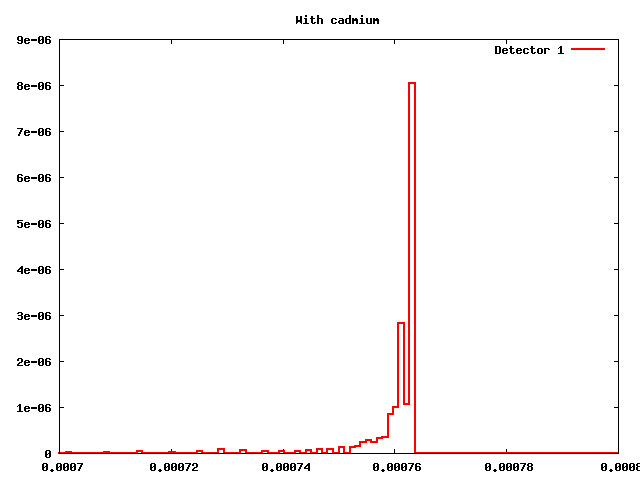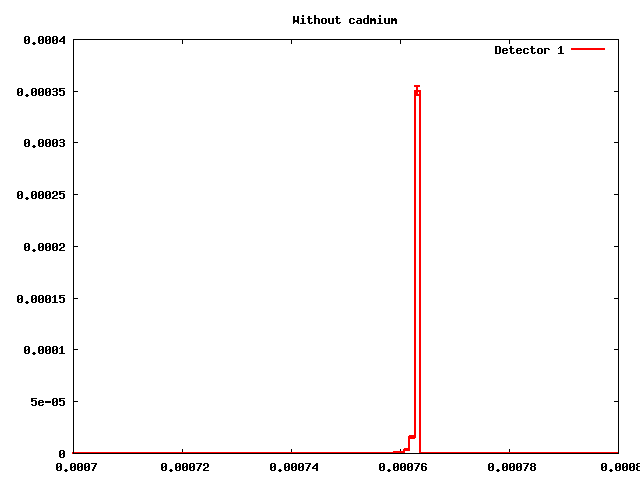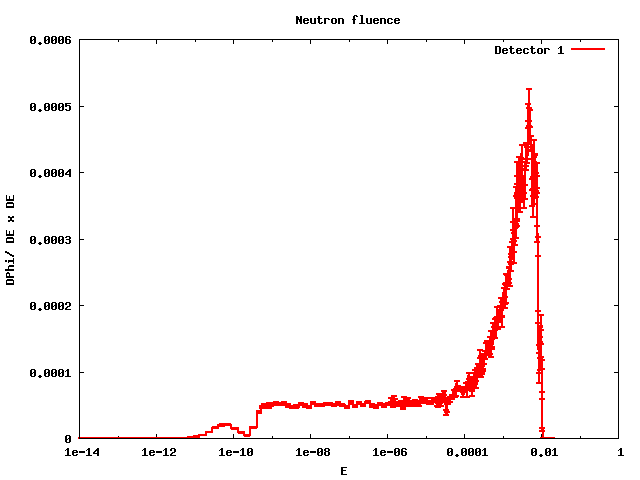Dear Fluka experts,
I simulated an isotropic AmBe source and an assembly of polyethylene which termalizes the neutrons emitted by the source; at around 30 cm from the source I placed a bare He3 detector. The assembly consists of a cylinder around the source and a kind of box of PE around the detector.
I want to predict the counts of the He3, so I assigned the card DETECT to the sensitive volume of the He3. I know that the proton and tritium produced by the (n,p) reaction are not trasported, but they deposit their enetgy locally, so I get a spectrum which is essentially a peak in correspondance of the Q-value. Anyway, I’m not interested in the spectrum so I calculated my counts just summing the event per pimary in the main peak.
First question: why the peak is not at the bin where764 keV belongs but at the bin right below? Is just a numerical reason?
I repeated the simulation surrounding the He-3 with a sphere of Cadmium (0.5 mm of thickness, because it resproduces a real one). With cadmium I expect to have the contribution of the gamma produced by the neutron capture and in fact I have counts below 100 keV that I neglect because they are below the threshold of my actual detector. However, I also got non negligible counts right below the Q-value, are these counts still gamma?
If yes, these counts represent the energy deposited by the gamma in the HE3, so I have to count them to reproduce a real detector? Or is there the possibility that these gammas release all their energy in the point where they are created (so I maybe have to discard them, because in the actual detector they release an energy which is under threshold?)
I attach the spectrum of the card DETECT without cadmium, with cadmium and the spectrum of neutrons that I got with the USRTRACK card (inside the He3) with the cadmium.
I read from the manual that the gamma are produce according to the group algorith but they are fully transported as all the other particle. However I read a very old comment (on the previous forum) which says that if there are no information about gamma production the Q value goes nto Kerma and stop. I don’t think i fully understood this sentence, do the card detect just count for the entire enrgy? This can happen with excited state of Cadmium produced by the neutron capture? I checked the table in the manual and both the RN and the GAM column are Y.
Sorry for the long post, I just want to be sure to count the right events coherently with the counts
Thank you,
Francesca


